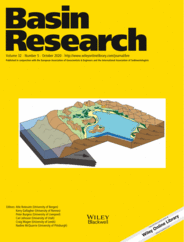
Full text loading...
 , Yury Popov1, Georgy Peshkov1, Mikhail Spasennykh1, Evgeny Popov1, Raisa Romushkevich1
, Yury Popov1, Georgy Peshkov1, Mikhail Spasennykh1, Evgeny Popov1, Raisa Romushkevich1
Essential error of widely used geometric mean mixing rule for rock thermal conductivity estimation inferred from experiments as one of pitfalls of basin modelling.
Basin and petroleum systems are routinely modelled to provide qualitative and quantitative assessments of a hydrocarbon play. The importance of the rock thermal properties and heat flow density in thermal modelling the history of a basin are well‐known, but little attention is paid to assumptions of the thermal conductivity, present‐day heat flow density and thermal history of basins. Assumed values are often far from measured values when data are available to check parameters, and effective thermal conductivity models prescribed in many basin simulators require improvement. The reconstructed thermal history is often justified by a successful calibration to present‐day temperature and vitrinite reflectance data. However, a successful calibration does not guarantee that the reconstruction history is correct. In this paper, we describe the pitfalls in setting the thermal conductivity and heat flow density in basin models and the typical uncertainties in these parameters, and we estimate the consequences by means of a one‐dimensional model of the super‐deep Tyumen SG‐6 well area that benefits from large amounts of reliable input and calibration data. The results show that the entire approach to present‐day heat flow evaluations needs to be reassessed. Unreliable heat flow density data along with a lack of measurements of rock thermal properties of cores can undermine the quality of basin and petroleum system modelling.
]
Article metrics loading...

Full text loading...
References


Data & Media loading...

